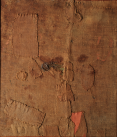Abstract
The first Castilian translation of Ovid's Metamorphoses was in the General estoria, a wide-ranging universal history composed in the historiographical workshop of Alfonso X the Wise, king of Castile (1221–84). The General estoria translated both Ovid's text and its medieval gloss, which had developed in long and complex commentaries during the second half of the thirteenth century. While it is easy to identify which sections the Castilian version added to the original text, it it more difficult to attribute them to a specific commentary or author. However, the characteristics of the translated gloss, the location in the General estoria into which it is inserted, and its contents, enable one to reconstruct the type of Metamorphoses manuscript that was likely available in the Alphonsine scriptorium. The identifiable features of the codex potentially used in the General estoria translation shed light on its intimate relationship with the copy known by the author of the Ovide moralisé (ca. 1320), a poem containing the first translation of the Metamorphoses into French, and the first complete translation into any Romance language. In this article, I present the main conclusions drawn from the study of the gloss on the Metamorphoses translated in the General estoria, and its correspondences with medieval Latin commentaries and manuscripts on one hand, and with the exegesis translated in the Ovide moralisé on the other.
Except where otherwise noted, the content of this site is licensed under a Creative Commons Attribution-ShareAlike 4.0 International (CC BY-SA 4.0).
Authors retain copyright of their work. The CC BY-SA 4.0 licence allows readers to copy and redistribute the material in any medium or format, and to remix, transform, and build upon the material for any purpose, even commercially, as long as the original author is credited and as long as any works that are derived from the original are distributed under the same terms.

